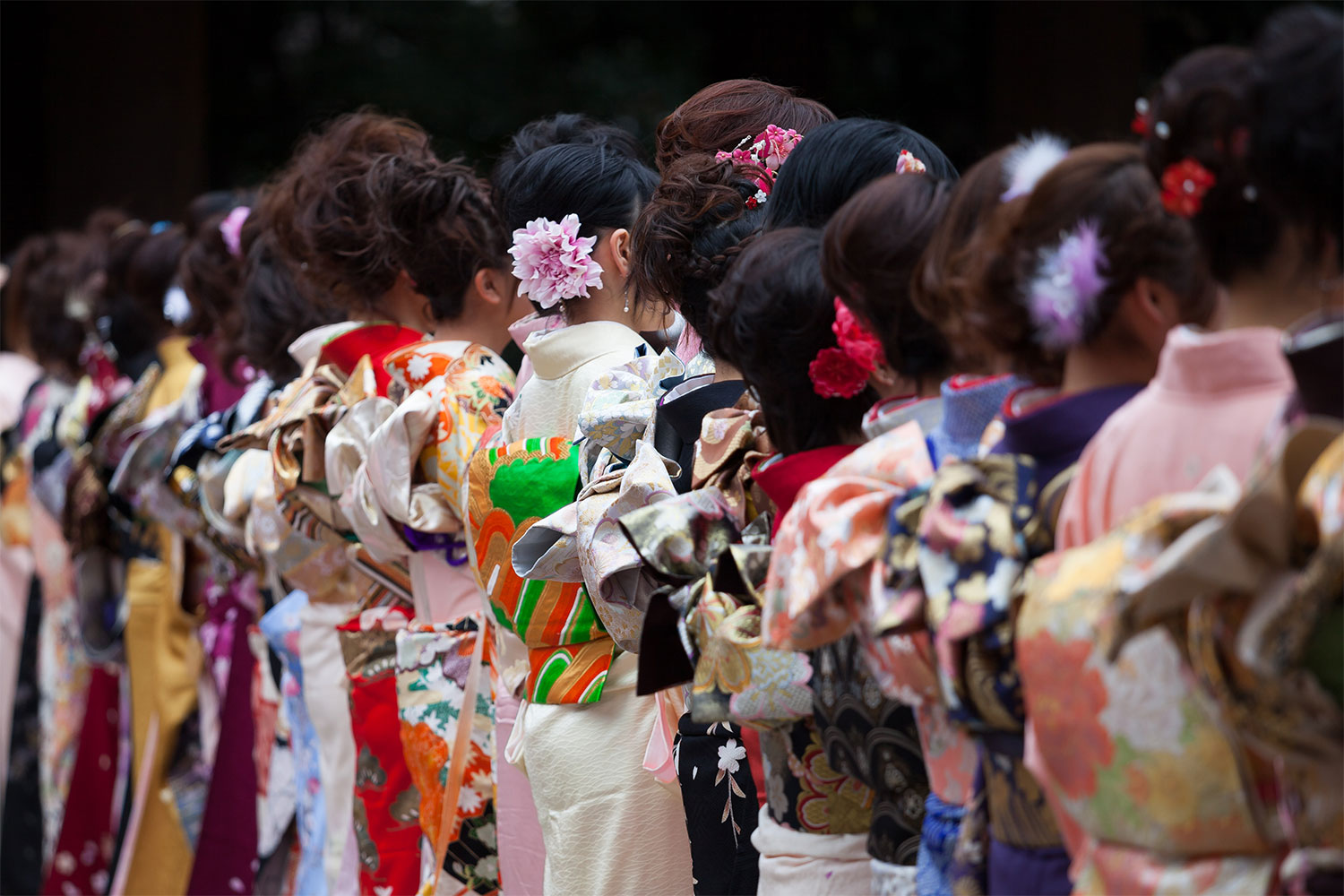

SEIJIN-SHIKI – A COMING OF AGE CEREMONY
What is the origin of the coming of age ceremony?
Seijin-shiki (成人式), the coming of age ceremony, originates from the former traditional celebrations: genpuku (元服) and mogi (裳着). During genpuku, Japanese adolescents aged 11-16 celebrated adulthood, while mogi was the ceremony for girls. Both traditions have Shintoist roots and they were already practised in the 8th century. This was when men were conferred full rights in the community and could start a family. Women could get married.
Seijin-shiki is a ceremony celebrated in Japan by all boys and all girls who turn 20. The event takes place on the second Monday of January so the precise date of birth is less important. All twenty-year-olds enter adulthood together. Seijin-shiki is a national holiday and as such it is a non-working day. Starting from 2022, the age of adulthood is planned to be lowered. The Japanese are expected to come of age just as Europeans do – once they turn 18.
How is coming of age celebrated in Japan?
The contemporary coming of age celebrations in Japan are different from those in the Meiji or Edo periods. It is a day when twenty-year-olds return to their home towns, where they are welcomed by their parents, grandparents, more distant relatives and friends. Various rituals and prayers are held in temples and institutions to secure their prosperous adulthood. The mayor and the local authorities express their congratulations and wishes. They also remind the young people what this stage really means for them. The Japanese may now participate in political life and must be aware of being fully accountable for their own actions. They are also informed about social security, premiums or insurance issues.
Cities organise various attractions, such as concerts, shows, competitions, they set up food stands, craft stalls and even carousels. Coming of age also gives twenty-year-olds the right to buy alcohol and tobacco products. Because of that, just after the formal celebrations, the majority of them decide to make a full use of their new rights by going to pubs or clubs.
Japanese clothes for the Seijin-shiki ceremony
The Japanese coming of age ceremony is a festive event. Not only because of the concerts, shows or full pubs but also due to the prior preparations of the brand new adults. One the days before Seijin-shiki, beauty salons have full schedules. This applies mostly to women, who want to look spectacular. Sometime an appointment has to be made even a year before.
A traditional outfit of a woman during a Japanese coming of age ceremony consists of several basic elements. A colourful kimono or furisode (振袖), that is a long-sleeved kimono, is of course the most important item. The clothes are incredibly expensive, with their prices reaching up to several thousand yens. This is why they are often rented or passed down for generations. On their feet, young Japanese women wear the characteristic zōri (草履) sandals. If the weather is cold, they cover their arms and necks with snow-white fur coats. Their appearance is complemented with stylish cocktail party bags.
Men wear elegant suits. Only in more conservative circles, more attached to tradition, boys wear a special kimono for Seijin-shiki. It consists of hakama (袴) – traditional wide Japanese wide-leg trousers, and haori (羽織) – a kimono-style jacket with wide and long sleeves. Furisode and haori are also worn by the bride and the groom for the wedding ceremony.
Archery during Seijin-shiki versus morality and spirituality
In many regions of Japan, the second Monday of January is the day of traditional ceremonies of Japanese archery according to the art of kyūdō (弓道). This is not typical sports archery and it is not about rivalry. The samurai traditions lie at the core of the practice. The brand new adults are to learn balance, poise, discipline and patience for the future years of their life.
A Seijin-shiki ceremony is not only a formal and legal change for a young person but it is especially supposed to mark moral and spiritual growth.














